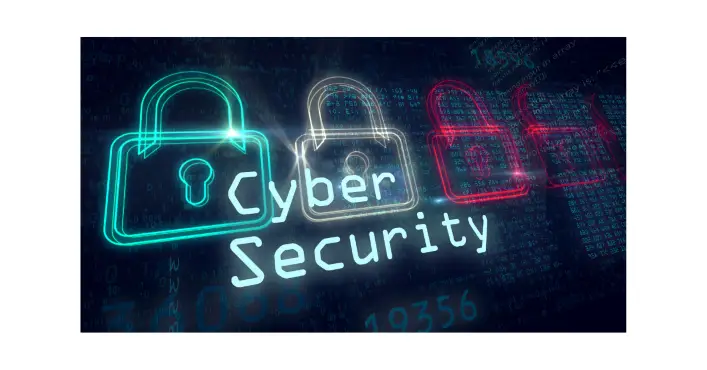Cybersecurity risk is the potential for unauthorized access, theft or damage to information systems and data. It encompasses many threats impacting data confidentiality, integrity, and availability.
To understand cybersecurity risk, it is important to explore its different types. These include malware attacks, phishing scams, hacking attempts, and insider threats.
Each type has unique characteristics that seriously threaten an organization’s security posture. Understanding these risks is essential for developing effective strategies for mitigating them.
This article will delve into the different types of cybersecurity risks, their impact on business operations, proactive measures for mitigating them, and responding to incidents when they occur.
Additionally, we will discuss the future of cybersecurity risk in an increasingly connected world and how organizations must stay ahead of emerging threats to protect their assets from harm.

Types of Cybersecurity Risk
One common type of cybersecurity risk is malware, which includes viruses, worms, and trojans. Malware can cause extensive damage to an organization’s information system by stealing sensitive data or disrupting normal operations.
Prevention strategies for malware include installing antivirus software, keeping software up-to-date, and educating employees on safe browsing habits.
Another type of cybersecurity risk is phishing, where cybercriminals attempt to trick individuals into divulging sensitive information, such as login credentials or financial details, through fraudulent emails or websites.
Phishing attacks often target human rather than technical vulnerabilities in an organization’s information system. Prevention strategies for phishing include implementing email filters to detect suspicious emails and training employees to identify and report potential phishing attempts.
A third type of cybersecurity risk is denial-of-service (DoS) attacks, where an attacker floods a network with traffic until it becomes overwhelmed and unavailable to users. DoS attacks can be difficult to prevent since they do not necessarily involve unauthorized access to a system.
However, organizations can mitigate the impact of DoS attacks by implementing proper network design principles like load balancing and having backup servers ready in case an attack occurs.
Understanding these cybersecurity risks is essential for organizations to develop effective prevention strategies that address their unique needs and circumstances.
Understanding the Impact of Cybersecurity Risk
Financial loss is one of the most common consequences of a cyber attack, with businesses losing millions of dollars in revenue and recovery costs.
Reputational harm is another critical factor, as it can damage an organization’s brand image and customer trust.
Legal and regulatory consequences may also arise from a data breach, leading to lawsuits, fines, and penalties.
Additionally, physical harm and national security threats are potential outcomes that could have severe implications for individuals or nations.
Financial Loss
Monetary harm from a security breach can potentially cause severe financial distress for organizations and their stakeholders.
The impact of cyber attacks on an organization’s financial status can be significant, with direct costs including investigating the attack, repairing the damage, and upgrading systems to prevent future attacks.
Indirect costs may also include lost business opportunities due to decreased customer trust and reputational damage.
Prevention strategies are crucial in mitigating financial loss resulting from cyber attacks.
Organizations should invest in cybersecurity measures such as firewalls, antivirus software, intrusion detection systems, and employee awareness training programs.
Insurance coverage is another useful tool organizations can use to protect against financial loss due to cyber-attacks.
Cyber liability insurance covers losses from data breaches or other cybersecurity incidents such as network failures or website crashes.
It also provides legal defence fees in case of lawsuits filed by third parties affected by the incident.
Reputational Harm
Reputational harm resulting from security breaches is a critical concern for organizations, as it can have long-lasting effects on their brand image and public perception.
A company’s reputation is built over time through consistently delivering quality products and services, ethical business practices, and positive customer interactions.
However, one cyberattack that compromises sensitive customer data or exposes the company’s vulnerabilities can instantly erode years of hard work in building a positive reputation.
Brand damage resulting from cybersecurity incidents can lead to lost business opportunities, decreased customer trust, and even legal repercussions.
Customers are more likely to take their business elsewhere if they feel their personal information is not secure with a particular organization.
Moreover, the negative publicity surrounding a security breach can cause irreparable damage to the company’s image by making it seem untrustworthy or negligent.
Legal and Regulatory Consequences
Legal and regulatory consequences stemming from security breaches can significantly impact an organization’s operations, financial stability, and compliance obligations, making companies need to prioritize robust measures to safeguard customer data.
Companies that fail to comply with the regulatory requirements of the industry in which they operate may face civil or criminal penalties. For instance, under the General Data Protection Regulation (GDPR), organizations that suffer a breach may be fined up to €20 million or 4% of their global annual revenue, whichever is higher.
Moreover, legal action taken by affected parties against a company can lead to significant expenses in terms of legal fees and damages paid out.
Depending on the severity of the breach and its impact on customers’ personal information, companies may also face reputational damage that could result in loss of business.
Companies need insurance coverage that includes cybersecurity-related incidents in their risk management strategy.
Physical Harm
Before delving into the topic of physical harm, it is essential to understand that legal and regulatory consequences are among the significant risks of cybersecurity. Sometimes, a breach may lead to court cases and hefty fines for businesses or individuals responsible for protecting data.
Moreover, regulations such as GDPR have set high standards on how organizations should handle personal data, and failure to comply may result in harsh penalties. Therefore, it is crucial to prioritize cybersecurity measures and ensure compliance with regulations to mitigate these legal and regulatory risks.
The importance of physical security cannot be overstated when it comes to mitigating physical harm caused by cyber threats. As more devices connect through the Internet of Things (IoT), there is an increasing risk of cyber-physical attacks that can cause real-world damage beyond just stealing data.
For instance, hackers could take control of a car or industrial equipment remotely, causing accidents resulting in severe injuries or fatalities.
Organizations must incorporate physical security measures such as access controls, surveillance systems, and firewalls into their cybersecurity strategy to prevent unauthorized access and protect against cyber-physical attacks.
National Security Threats
Cyber espionage, in particular, poses a significant threat as attackers target government agencies and organizations to steal sensitive information or gain access to control systems.
This can lead to severe consequences such as financial losses, reputational damage, and even physical harm.
Critical infrastructure refers to systems essential for society’s functioning, such as power grids, transportation networks, and water supply systems. These systems have become increasingly connected to the internet, making them vulnerable to cyber threats.
A successful attack on critical infrastructure could cause significant disruptions and even cripple entire economies.
As a result, governments and organizations must prioritize cybersecurity measures to protect their critical infrastructure from potential attacks.
Proactive Measures for Mitigating Cybersecurity Risk
One of the first steps in proactive cybersecurity measures is conducting a risk assessment.
A risk assessment involves identifying potential threats, assessing their likelihood and impact, and determining the necessary controls to mitigate them. It is essential to conduct periodic risk assessments to ensure that new threats are identified and addressed promptly.
Employee training is another critical aspect of proactive cybersecurity measures. Employees play an essential role in safeguarding company data and systems from cyber-attacks.
However, they can also be a significant source of vulnerability if not adequately trained to identify and respond to security incidents. Regular training sessions should cover password hygiene, social engineering tactics, identifying phishing emails, and reporting suspicious activities.
In addition to risk assessments and employee training, implementing technical controls such as firewalls, intrusion detection systems (IDS), anti-virus software, and patch management are important preventive strategies for mitigating cybersecurity risks.
These technical controls act as a barrier against cyber-attacks by detecting or preventing unauthorized access attempts or malware infections. Organizations must regularly update these technical controls to stay ahead of new threats that regularly emerge in the rapidly evolving cybersecurity landscape.
Implementing proactive measures for mitigating cybersecurity risks requires a comprehensive approach that includes regular risk assessments, employee training programs, and technical control implementation that is continually updated based on emerging threat intelligence information.

Responding to Cybersecurity Incidents
In a security breach, organizations must have an effective incident response plan to minimize damage and restore operations, instilling confidence in stakeholders and customers.
Cybersecurity incident response is a crucial aspect of any organization’s cybersecurity strategy. A well-designed incident management process can help mitigate risks associated with cyber threats.
The incident management process typically involves four phases: preparation, identification, containment, and recovery. The preparation phase includes developing an incident response plan that outlines the roles and responsibilities of each team member involved in managing the incident.
It also involves creating a communication plan to notify stakeholders of the breach and outlining steps for containing it.
Once an incident is identified, the next step is containment. This phase aims to stop or limit further damage caused by the breach. Depending on the severity of the attack, this may involve isolating affected systems or shutting them down entirely.
The final stage is recovery which focuses on restoring normal business operations as soon as possible while ensuring that all vulnerabilities are addressed to prevent future incidents.
A robust cybersecurity incident response plan helps organizations reduce potential losses due to cyber-attacks and ensures they can respond effectively when such threats arise.
The Future of Cybersecurity Risk
As technology evolves at an unprecedented pace, the landscape of potential threats facing organizations will become increasingly complex, demanding a more comprehensive approach to safeguarding against them.
AI and blockchain technologies are two such developments that have brought new dimensions to the cybersecurity risk landscape. On one hand, AI-powered attacks can learn and adapt in real time, making it difficult for traditional security measures to detect and mitigate them.
On the other hand, blockchain’s decentralized architecture offers improved data integrity and privacy and opens up new vulnerabilities like smart contract bugs.
To effectively manage these emerging risks, organizations must prioritize investments in cybersecurity talent development and adopt holistic strategies beyond deploying reactive security tools.
Using AI-powered predictive analytics can help identify potential threats before they materialize, while blockchain-based solutions can help improve supply chain security by providing greater visibility over transactions.
Moreover, collaboration among stakeholders is essential for sharing threat intelligence and best practices.
As we move into an era where connected devices underpin almost every facet of modern life, cybersecurity risk will continue to be a critical concern for all industries.
Businesses need to recognize the importance of staying vigilant and embracing proactive measures that address emerging risks head-on rather than reacting after the damage has been done.
Frequently Asked Questions
How can companies accurately measure the financial impact of a cybersecurity incident?
One way companies can accurately measure the financial impact of a cybersecurity incident is through cost-benefit analysis. This involves weighing the potential costs of investing in preventative measures against the potential costs of an incident.
Insurance coverage can also play a role in determining the financial impact, as policies may cover certain losses or damages.
Companies must conduct thorough assessments and consider all potential factors when evaluating the financial risks of cybersecurity incidents.
What common mistakes do companies make when attempting to mitigate cybersecurity risk?
Employee training and risk assessment are key aspects of effective cybersecurity risk mitigation, yet many companies make common mistakes in implementing these measures.
One such mistake is failing to provide comprehensive, ongoing employee training on cybersecurity best practices. This can leave employees vulnerable to phishing attacks and other forms of social engineering.
Another mistake is not conducting regular risk assessments to identify potential company systems and processes vulnerabilities. This lack of proactive identification can result in a reactive approach to security breaches, which can be costly and damaging to the company’s reputation.
Companies can better mitigate cybersecurity risks and protect their assets from potential threats by prioritising employee training and regular risk assessments.
How do emerging technologies, such as artificial intelligence and the Internet of Things, impact cybersecurity risk?
The emergence of new technologies such as Artificial Intelligence (AI) and the Internet of Things (IoT) has significantly impacted cybersecurity risk. AI, for example, can detect patterns and anomalies in network traffic that may indicate potential threats.
However, it is important to note that cybercriminals can also manipulate AI to evade detection.
Similarly, IoT devices have increased the attack surface for hackers by providing additional entry points into networks. Therefore, organisations must prioritize cybersecurity awareness training for their employees and implement robust security measures to mitigate these risks.
As technology continues to evolve at an unprecedented pace, organizations must stay vigilant and proactive in their approach towards cybersecurity.
What legal and regulatory considerations should companies consider when developing a cybersecurity strategy?
Companies must consider legal and regulatory requirements to ensure legal compliance and data protection when developing a cybersecurity strategy.
Legal compliance refers to laws and regulations concerning the company’s industry or geographic location.
For instance, in the European Union, companies must comply with the General Data Protection Regulation (GDPR), which requires strict measures for handling personal data. Failure to comply can result in hefty fines and reputational damage.
Additionally, companies must prioritize data protection by implementing security controls that safeguard sensitive information from unauthorized access or theft. This includes conducting vulnerability assessments, penetration testing, and incident response planning.
How can individuals protect themselves from cybersecurity threats at home and in the workplace?
Individuals can follow personal cybersecurity tips and enrol in cybersecurity training programs to protect themselves from cybersecurity threats, both at home and in the workplace.
Personal cybersecurity tips include creating strong passwords, updating software regularly, and being cautious when accessing emails or websites.
Cybersecurity training programs offer a comprehensive approach to understanding cyber threats and how to prevent them. These programs cover network security, malware protection, and data encryption.
Individuals can mitigate the risks of cyber attacks by implementing personal cybersecurity measures and receiving proper training.

Conclusion
Cybersecurity risk is a growing concern for businesses and individuals alike. Various cybersecurity risks include malware attacks, phishing schemes, and data breaches.
The impact of these risks can be severe, ranging from financial losses to reputational damage. However, proactive measures can be taken to mitigate these risks. This includes implementing proper security protocols and educating employees on safe online practices.
In a cybersecurity incident, it is important to respond promptly and effectively. This involves identifying the source of the breach, containing the damage caused by it, and restoring systems to normal operation as quickly as possible.
The future of cybersecurity risk remains uncertain as technology evolves at an unprecedented rate.
Despite this uncertainty, businesses must remain vigilant to protect themselves against cyber threats. As technology advances into our daily lives, with smart homes and self-driving cars becoming more common, we must take steps towards securing our digital identities just as we do with physical assets like our homes or cars.
Cybersecurity should no longer be seen as an optional extra but rather an essential component in all areas of life that require secure data handling, such as banking or healthcare services.
Cybersecurity risk is a complex issue that requires continual attention and adaptation due to its ever-evolving nature. Individuals and organizations must remain informed about emerging threats while taking proactive measures to mitigate potential risks.

Chris Ekai is a Risk Management expert with over 10 years of experience in the field. He has a Master’s(MSc) degree in Risk Management from University of Portsmouth and is a CPA and Finance professional. He currently works as a Content Manager at Risk Publishing, writing about Enterprise Risk Management, Business Continuity Management and Project Management.

